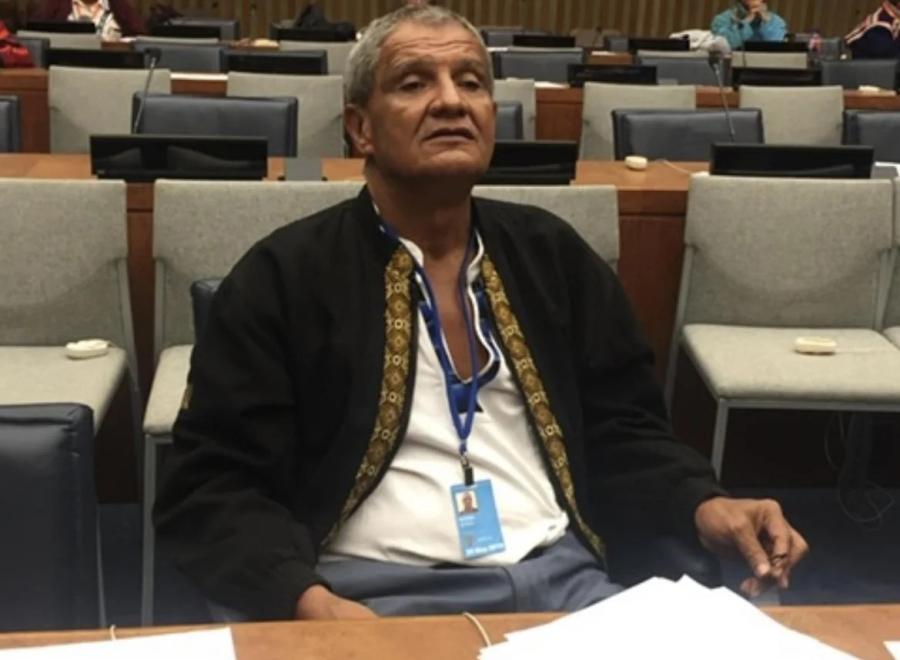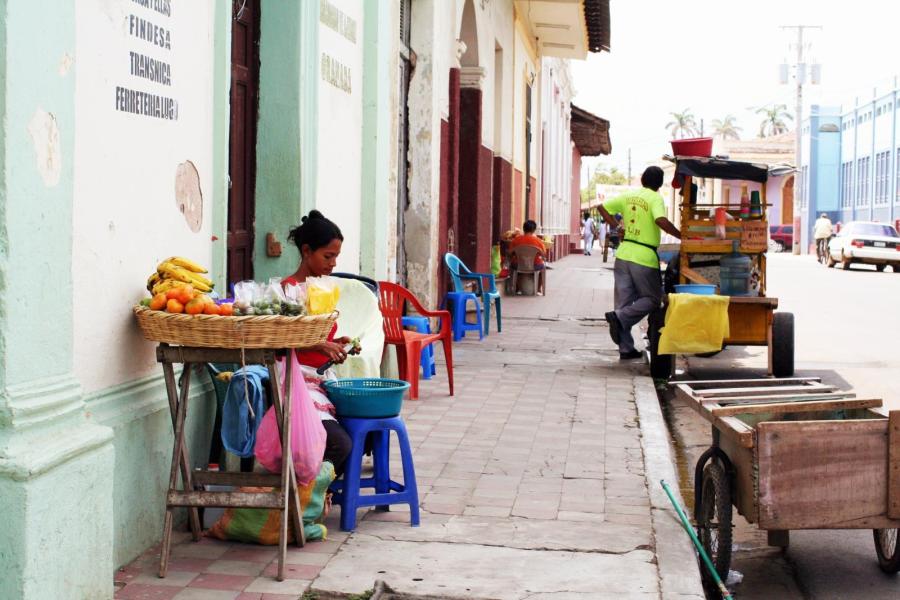One year after the Inter-American Court of Human Rights ordered that the Nicaragua government demarcate and grant title to Awas Tingni territory, the state has yet to respond. Although the Inter-American Court’s order of August 31, 2001, required that Nicaragua submit progress reports on the demarcation process every six months,1 no reports have been filed. In response, the court issued a resolution September 6 requiring Nicaragua to take the necessary measures “without delay” to protect Awas Tingni’s rights to the use of their land.2 Nicaragua has not yet responded to this resolution.
The 2001 ruling was considered a great step forward in securing indigenous communities’ fundamental rights to the recognition and protection of their ancestral lands. The case was the culmination of years of wrangling (see CSQ 25:4). Awas Tingni is one of many communities indigenous to Nicaragua’s Atlantic coastal region. The community has communally held its ancestral territory for hundreds of years. In 1995 the Awas Tingni learned of the Nicaragua government’s plan to grant a logging license to Korean lumber company SOLCARSA on more than 62,000 hectares of the community’s homeland.3 Although the Nicaragua Constitution concedes “equal protection” under law for the many indigenous communities of the state’s Atlantic coastal region, the government claimed that the Awas Tingni had neither legal title nor ancestral right to the land in question. Mayagna (Sumo) Awas Tingni Community v. Nicaragua was first brought before the Inter-American Court in November 2000. Nicaragua was found to be in violation of several articles of the American Convention on Human Rights, and was ordered to demarcate and vest title in the land as property of the Awas Tingni community, as well as pay $50,000 in reparations and $30,000 in legal fees.4
With its decision, the Inter-American Court set a legal precedent by recognizing, as a human right to be honored and protected, indigenous peoples’ access to use their customary land and natural resources.
The Importance of the Land
The Awas Tingni community is recognized by both the Nicaragua Constitution and by Nicaragua’s Statute of Autonomy of the Atlantic Coast Region.5 It is part of the larger Mayagna group indigenous to the area. The Mayagna is one of three groups of the Atlantic coastal region belonging to a single linguistic family that is generally agreed to have existed in the area at least since the 14th century and probably much longer. The population of the community is approximately 650 individuals, or 150 families, whose principal language is Mayagna, although most people speak at least some Spanish.
The Awas Tingni hold their land communally. Each family maintains several plantations, between one-half hectare and one hectare each, that they cultivate using the slash-and-burn system. This method mimics the natural forest system and is economically productive as well as ecologically sustainable. During the rotating period of regeneration, the community does not “use” the land; in order for the land to regenerate to productive capacity, it must remain idle for approximately 15 years. Thus, in order for the Awas Tingni to maintain their traditional subsistence, a much greater area than is “in use” at a given time is necessary. Although the group hunts deer and fowl, the main focus is on the peccary—wild boar—that inhabits the hills of their territory. Entire families go on hunts for days or even weeks for these venerated animals that provide meat and skins. Peccary are also the focus of social events such as feasts. The Awas Tingni spiritual connection to the pecarry brings to light the nexus of their connection to their land.
The group’s territory plays an important role in two key areas of Awas Tingni spirituality—in their relations with their ancestors and in their relations with the spirits that inhabit and exercise control over the mountains and wildlife. Awas Tingni lands are flush with burial grounds, which people visit regularly; part of growing up in the community is having the locations of the burial grounds revealed. The mountain spirits, along with a capacity to heal the sick, control the movements of the animals of the mountain, and thereby control the hunt of the Awas Tingni; to displease the mountain spirits is to jeopardize the life and soul of the community.
Both Awas Tingni spiritual and subsistence activities are clearly and intricately dependent on the land. Loss of even a portion of territory would mean great losses to both ecological and spiritual integrity.
The Legal Context
Nicaragua does generally acknowledge the rights of indigenous communities in its constitution and in some limited legislation.6 And because the country is a member of the Organization of American States (OAS) and the International Labor Organization (ILO), other rights provisions also apply. Nicaragua has pledged to recognize and respect the rights of indigenous peoples not only through its own constitution and legislation, but also through its membership in both the OAS and the ILO. But despite all of these commitments, Nicaragua has in practice virtually ignored the rights of its indigenous communities, particularly the rights to the use of their ancestral territory.
When the Nicaragua government granted the concession to SOLCARSA in 1995, the community was not consulted about the concession nor even informed that logging would commence on their territory. The Awas Tingni only discovered the logging operation when Theodore Macdonald, anthropologist and Cultural Survival associate, as well as guest editor of this issue of Cultural Survival Quarterly, visited the territory to perform an ethnographic study that included mapping community territory using Global Positioning System technology.
After seeking legal counsel from Cultural Survival board member S. James Anaya and others, the community sought an amparo action (a legal proceeding similar to a request for an injunction) in September 1995 with the Matagalpa Appellate Tribunal. The action sought to prevent the Ministry of the Environment and Natural Resources from granting SOLCARSA the logging concession. This primary attempt was thwarted, however, because the community failed to file the action within 30 days of obtaining knowledge of the alleged infringement of their rights.7
In March 1996, the Regional Council of the North Atlantic Coast Autonomous Region filed another amparo action requesting the revocation of the SOLCARSA concession. The Nicaragua Supreme Court granted this request and declared the concession unconstitutional in February 1997.8 The Nicaragua government ignored their Supreme Court’s decision, however, and the logging operations continued. Because of the failure of the Nicaragua legal system to remedy the infraction on the group’s human rights, the community filed a petition October 2, 1995 (shortly after the first amparo was dismissed), with the Inter-American Commission on Human Rights. After evaluating the community’s concerns, the Inter-American Commission filed a petition before the Inter-American Court against Nicaragua on behalf of the Awas Tingni. The community members sought recognition of their communal land rights, demarcation of their territory to guarantee their legal rights, and reparations for the damages incurred by the logging concession.
The community’s efforts culminated in November 2000, when the Inter-American Court heard the case and issued its ruling nine months later. During the hearing, Awas Tingni community leaders presented evidence of their traditional land claims and local and international lawyers and anthropologists testified. The Nicaraguan government claimed that the Awas Tingni were of mixed ethnic origins and were not indigenous to the area, but had only recently moved to the territory.
The Awas Tingni community is poised to become a model for legal and political recognition of indigenous land rights. The August 2001 decision was a landmark in the fight to protect indigenous peoples’ land rights. Undoubtedly, the Nicaragua government’s choice to ignore the ruling will have wide-reaching implications for future indigenous land rights cases and for the authority of the Inter-American Court in general.
1. Inter-American Court of Human Rights. (2001, Aug 31). The Case of the Mayagna (Sumo) Awas Tingni Community v. Nicaragua Judgment. Para 173.
2. Wiggins, A. La Corte Interamericana de Derechos Humanos vuelve a exigir a Nicaragua que Garantice los Derechos de la Comunidad Awas Tingni.
3. Inter-Am. C.H.R., The Case of the Mayagna (Sumo) Awas Tingni Community v. Nicaragua, Judgment of Aug. 31, 2001, para. 103(k).
4. Id. at para. 173.
5. For all cultural context factual data see Theodore Macdonald, “Awas Tingni. An Ethnographic Study of the Community and its Territory. 1999 Report,” prepared by The Awas Tingni Territorial Demarcation Project.
6. See Complaint of the Inter-American Commission on Human Rights Submitted to the Inter-American Court of Human Rights, 19 Ariz. J. Intl. & Comp. L. 17 (Spring 2002).
7. Judgment at para. 103(p).
8. Id. at para. 103(q).
Jonathan Vuotto received a bachelor’s degree in psychology and anthropology from Kutztown University and a master's degree in anthropology from Brandeis University. He is now a student at Boston University School of Law, where he was recently accepted to membership on the BUSL International Law Journal.



